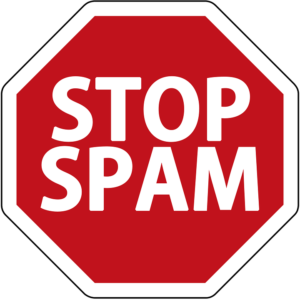In a recent vlog, the BPR staff recorded video letters for journalists, which addressed a variety of things from letting them know we’re paid subscribers to thanking them for responding to our pitches. In my video letter, I said that I’m not a spammer. If you’ve been working in public relations long enough, I’m sure you’ve pitched a reporter only to receive a reply with a message along the lines of “unsubscribe” or “remove me from this list.” After carefully researching the journalists who I think would be perfect for my topic, nothing bothers me more than getting one of these emails.

I don’t know how other PR professionals pitch reporters. However, what I do know is the amount of research I (and my colleagues here) do to find journalists that I’m confident will find my pitch interesting and a fit for their beat. In fact, I once replied to a reporter who told me to remove her from my list because my pitch wasn’t appropriate. I explained why I contacted her, and she eventually apologized and said to keep her in mind in the future. While I don’t expect every pitch I send to have all the reporters begging me for an interview, I am confident each one is at least related to what the reporters write about.
So, how can you be confident you’re not spamming journalists? Below are four things public relations professionals can do to separate their pitches from spam.
1. Pitch appropriate contacts. The first, and most important, thing PR pros can do to separate themselves from spammers is to pitch the appropriate contact. If you’re pitching your insurance client to a reporter who covers construction, you won’t be successful. Similarly, if you don’t take the time to research the person you’re pitching, you could end up contacting a publisher or managing editor, when there’s a reporter at that outlet who covers your topic exactly. It seems simple, but after speaking with numerous reporters, you’d be shocked at how many people fail at this part.
2. Don’t rely on databases. A database is a great tool for researching reporters and pulling contact information. However, it can also be a crutch. Relying solely on a database can leave you with a woefully inaccurate list. How? While these systems do list a reporter’s coverage area, they are not always correct. It’s possible it says a reporter covers business when in fact she is an environmental reporter. Or maybe it lists her at The Wall Street Journal when she moved to Reuters three months ago. I’ve even come across contacts who are no longer reporters, or worse, are deceased. One tip to prevent this is to check out the reporter on social media ― oftentimes she will list her beat on her Twitter bio or on LinkedIn. To reiterate, media databases are great tools that can help you build a solid base list, but you need to double check the results to be sure your list is accurate and suitable.
3. Follow up appropriately. You’ve sent your pitch, it’s been a couple hours, and you have no responses. What should you do? Relax. You do not need to call the reporter and confirm he received your message. The reporter may be on a tight deadline and your unexpected call will be an annoying interruption. Does this mean you should never follow up? Of course not. If it’s a time-sensitive story or topic, sooner is appropriate, but I’ve come to learn that for most pitches at least a week tends to work the best before following up. Writing a new pitch on the topic is also not necessary. Simply, re-send your original email. A reporter’s time is valuable, so why make him read two long emails? Keep it short and get right to the point, and if you’ve piqued his interest, he’ll take another look.
4. Read a reporter’s stories. Last, but certainly not least, always read a reporter’s stories. You can learn so much from the way a reporter writes and covers a certain topic. Say you’re pitching a story about private equity investments. You’ve found a contact from your database and checked out her Twitter bio, which mentions investing, so you send your email. Well, what you failed to do was read her stories to see she only covers hedge funds. While this is just one simple example, it shows the value of reading a reporter’s stories. Now, I know it’s not possible to read every story for each reporter you want to contact. However, what is possible is skimming their recent stories and headlines, to ensure your pitch aligns with their beat.
So, PR pros, are you a spammer? What else can you do to keep your pitch out of the spam folder?
In my events business I always try to reach out to the write set of people, and I certainly wait more than a few hours before panicking about not getting a response